Why you can trust Tom's Hardware
Software
Gigabyte includes a few applications designed for various functions, including RGB lighting control, audio, system monitoring, and overclocking. Below, we’ve captured several screenshots of the App Center, @BIOS, SIV, RGB Fusion and Easy Tune.
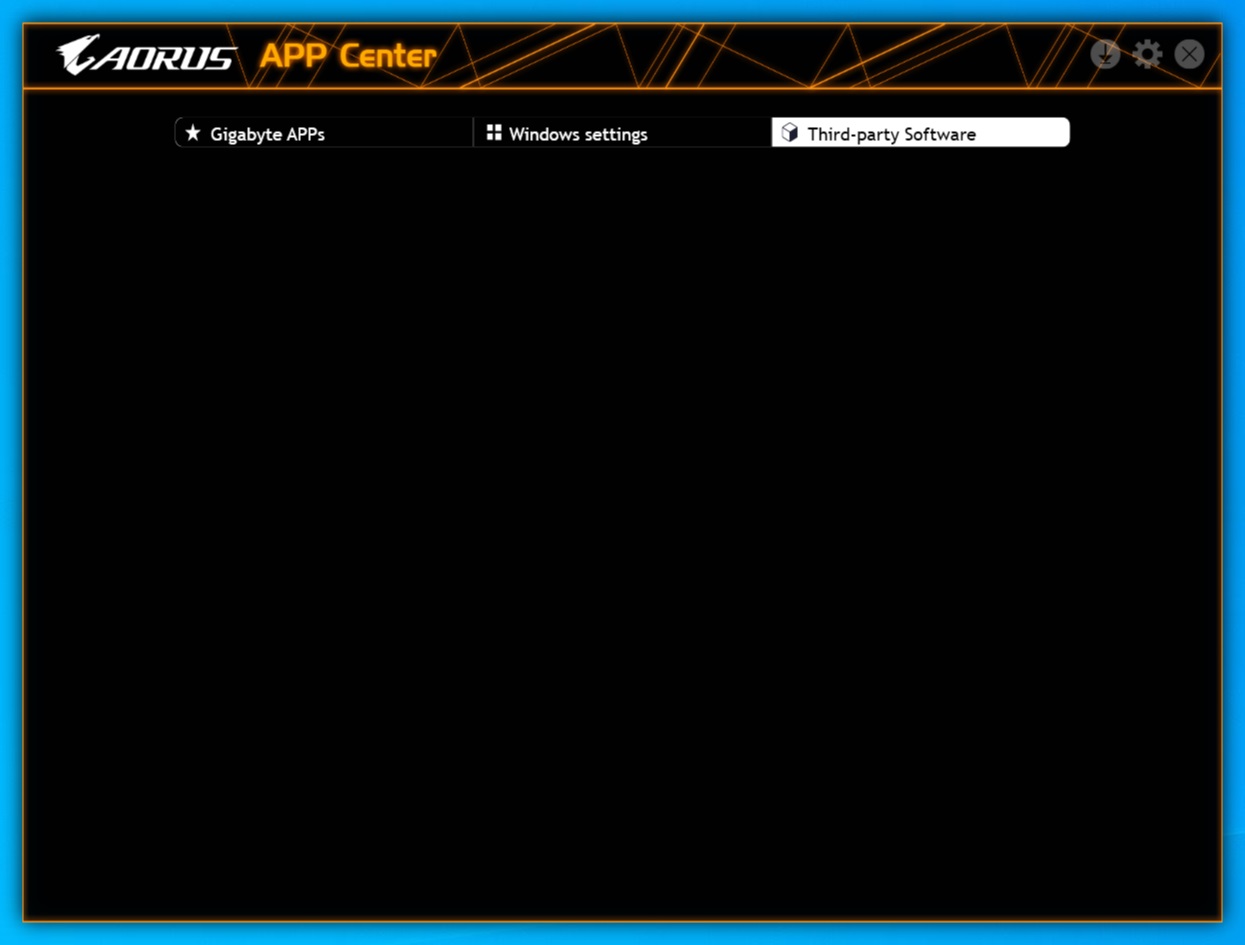

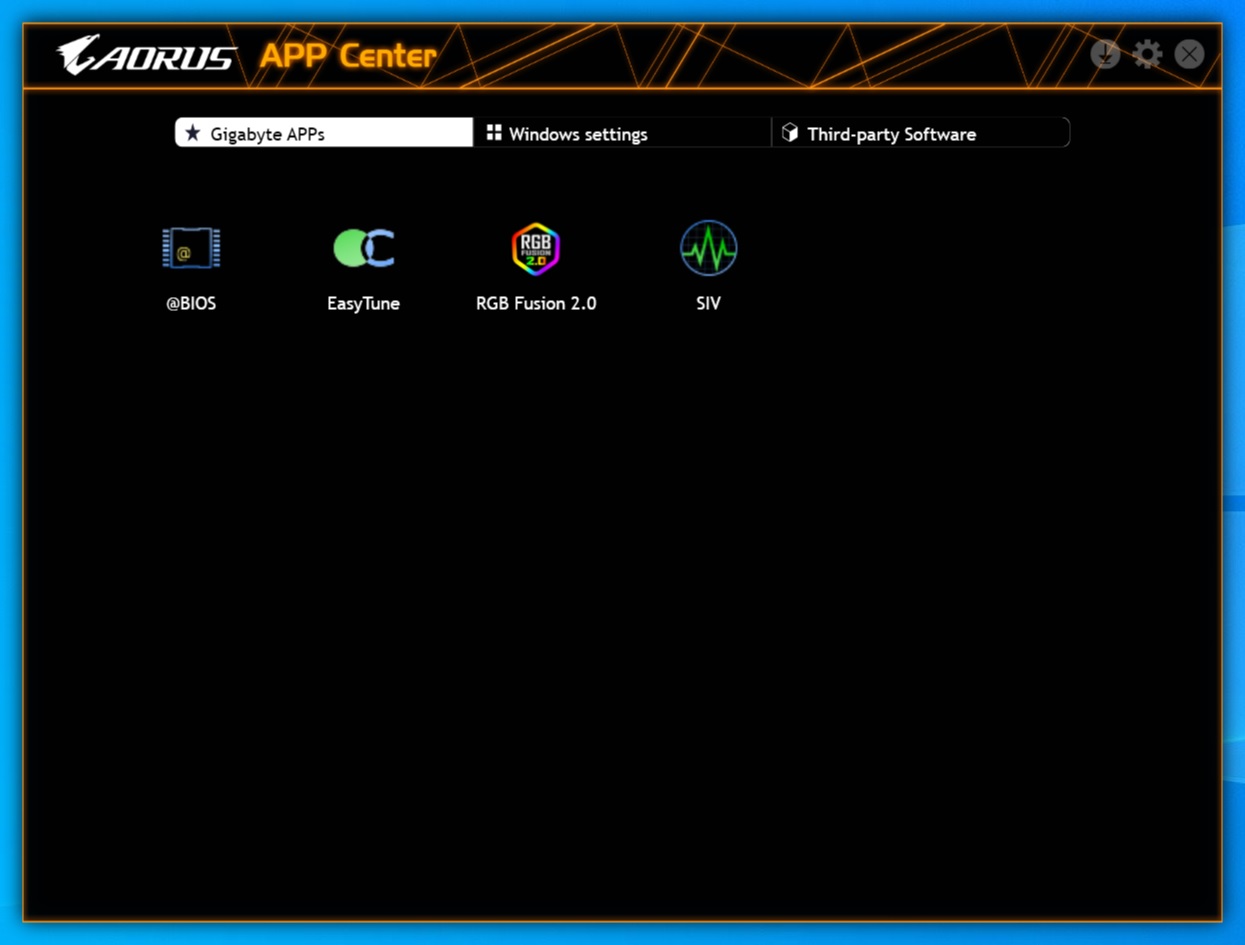





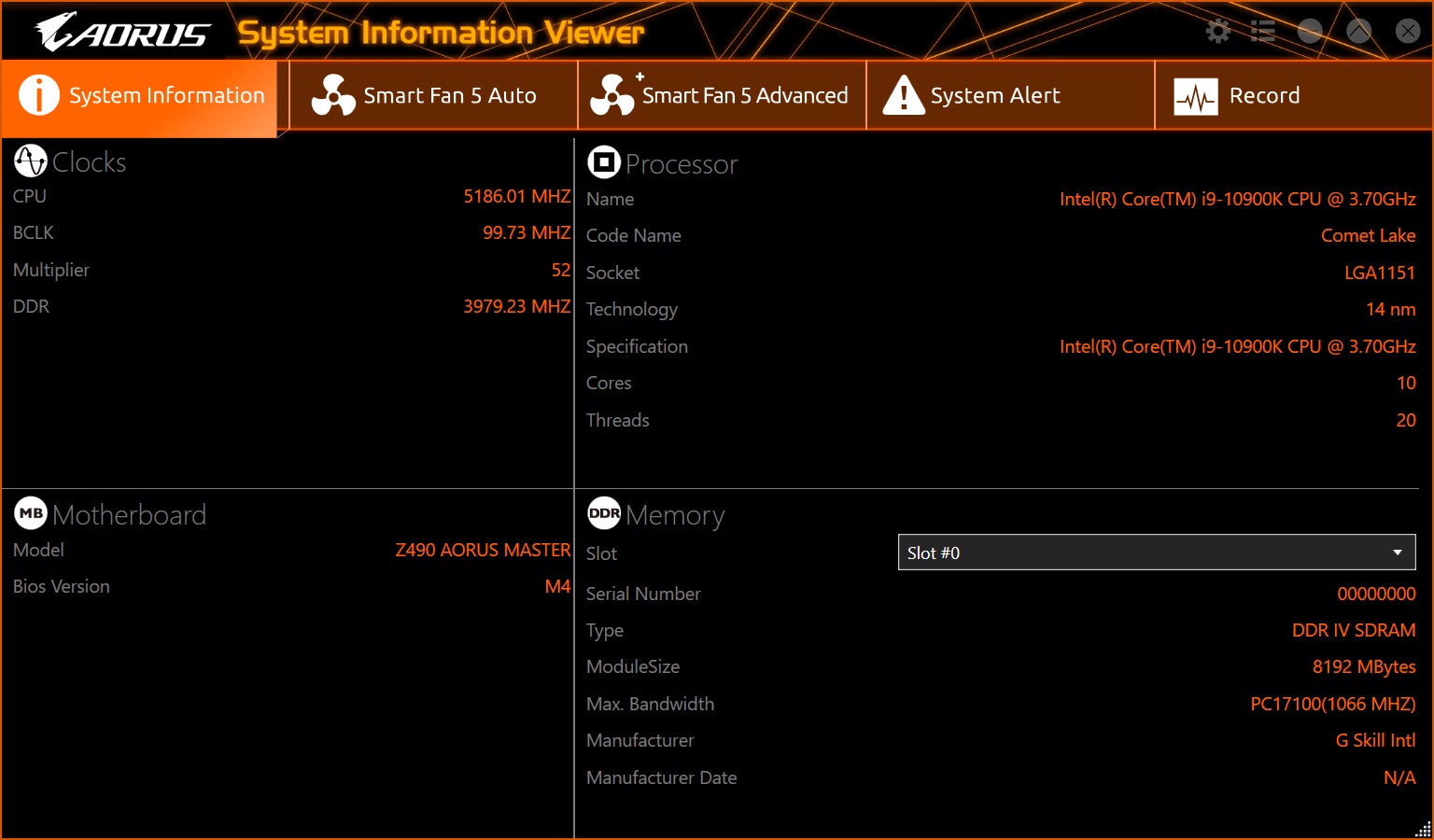



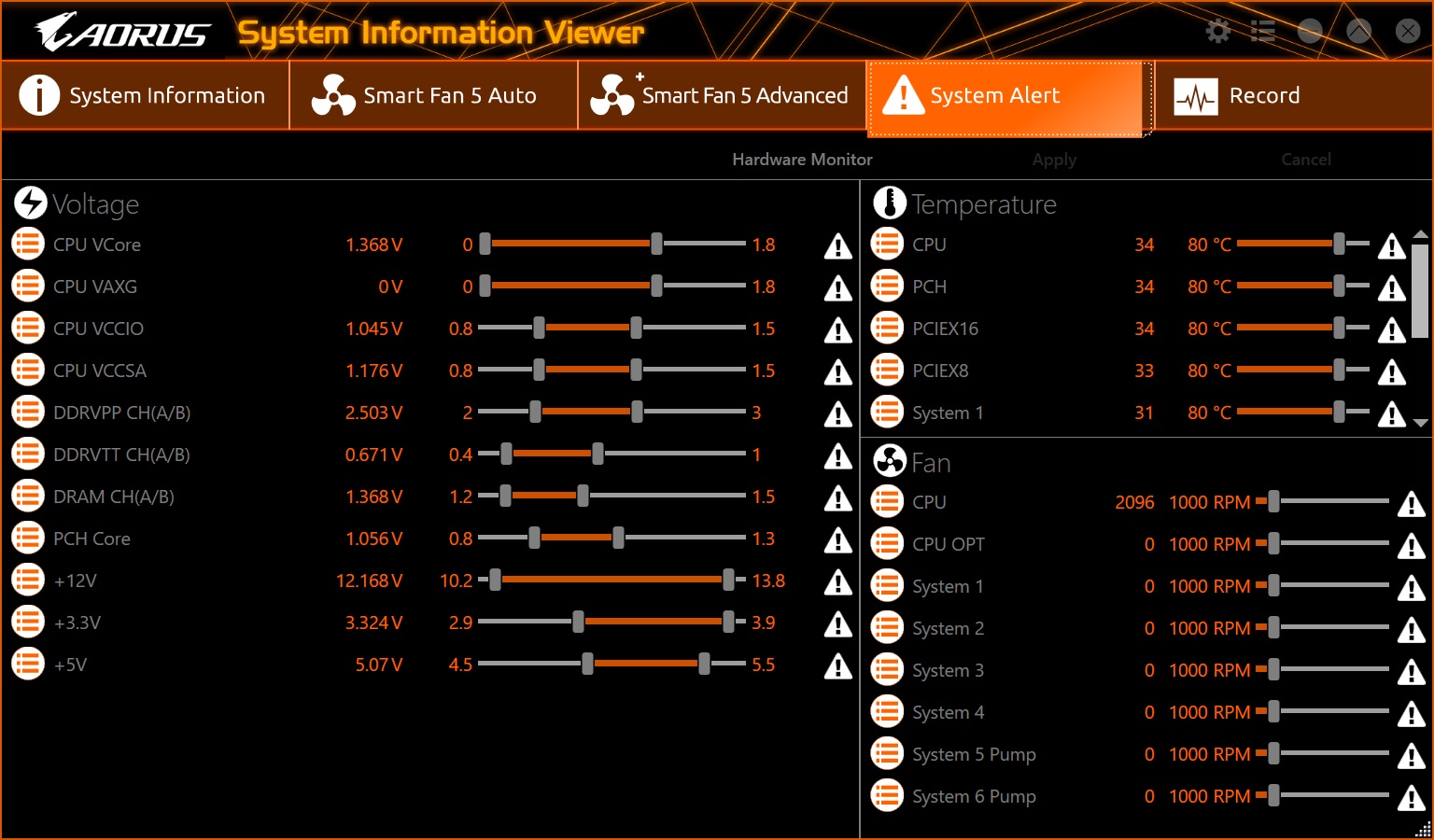

Firmware
To give you a sense of the Firmware, we’ve gathered screenshots showing most BIOS screens.
The BIOS on Gigabyte’s Z490 boards has worked well for me. The format of headings across the top, with most details on a single page or one level down, makes for easy navigation. We haven’t run into any issues so far with the BIOS.



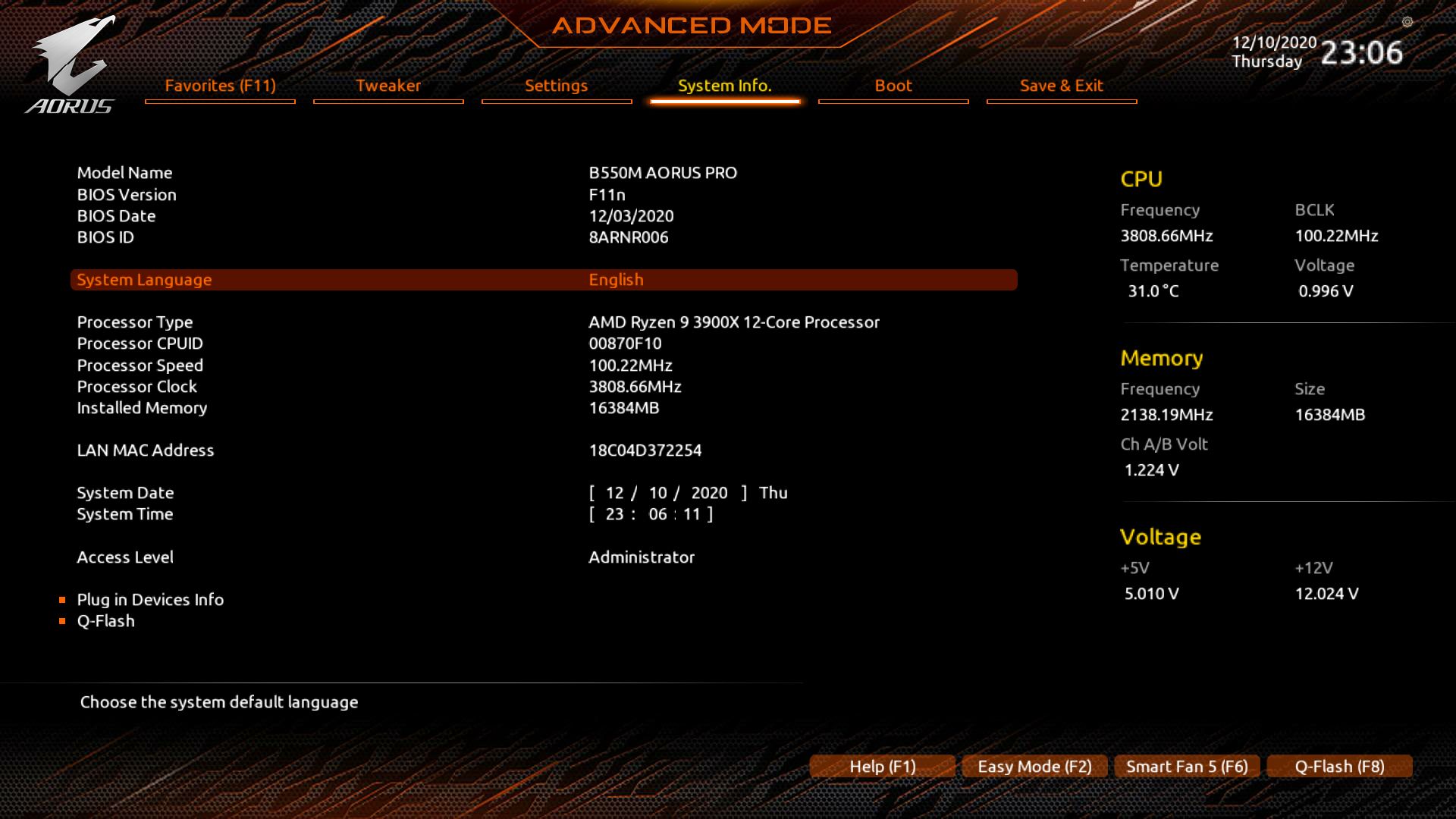




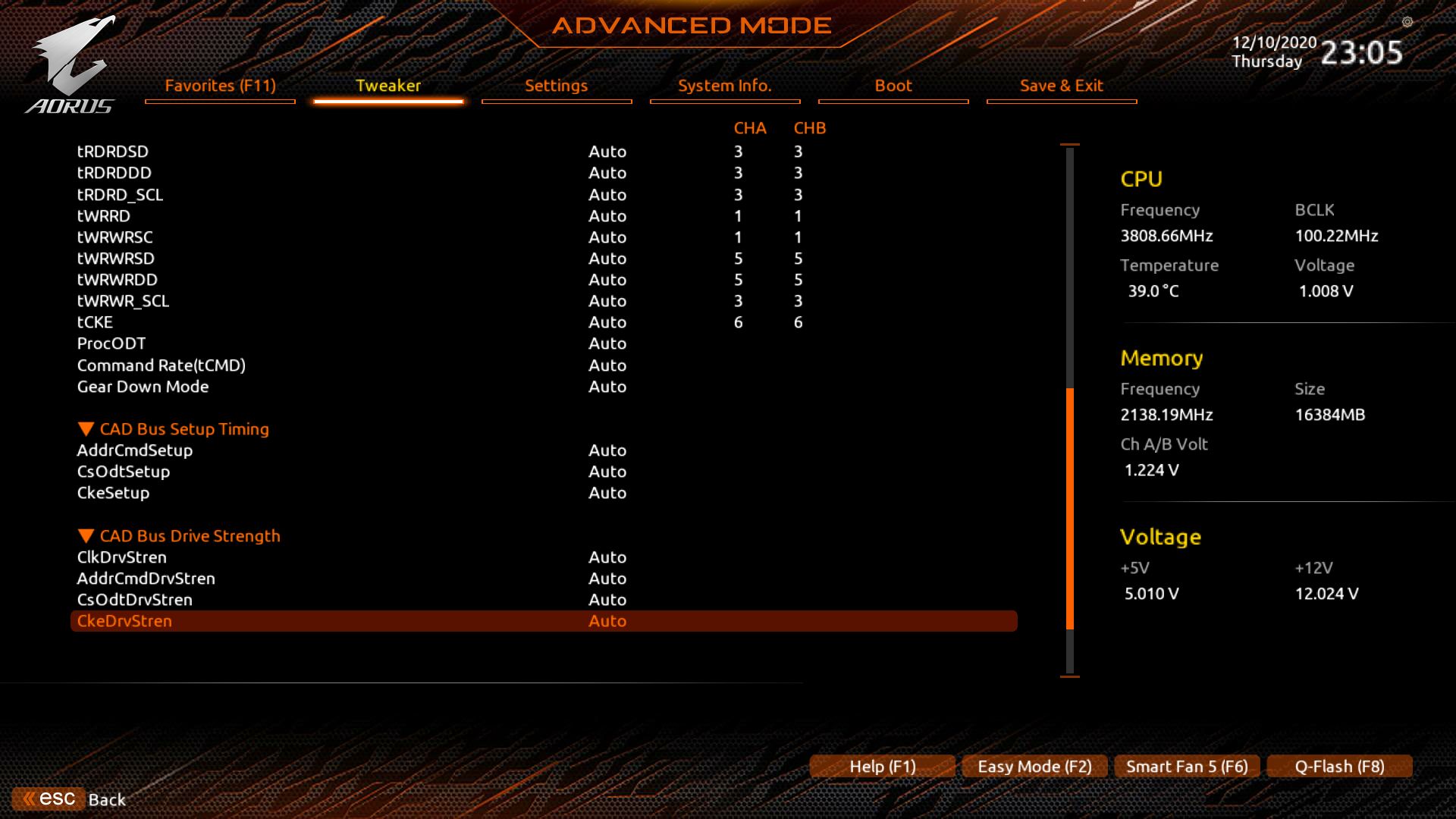








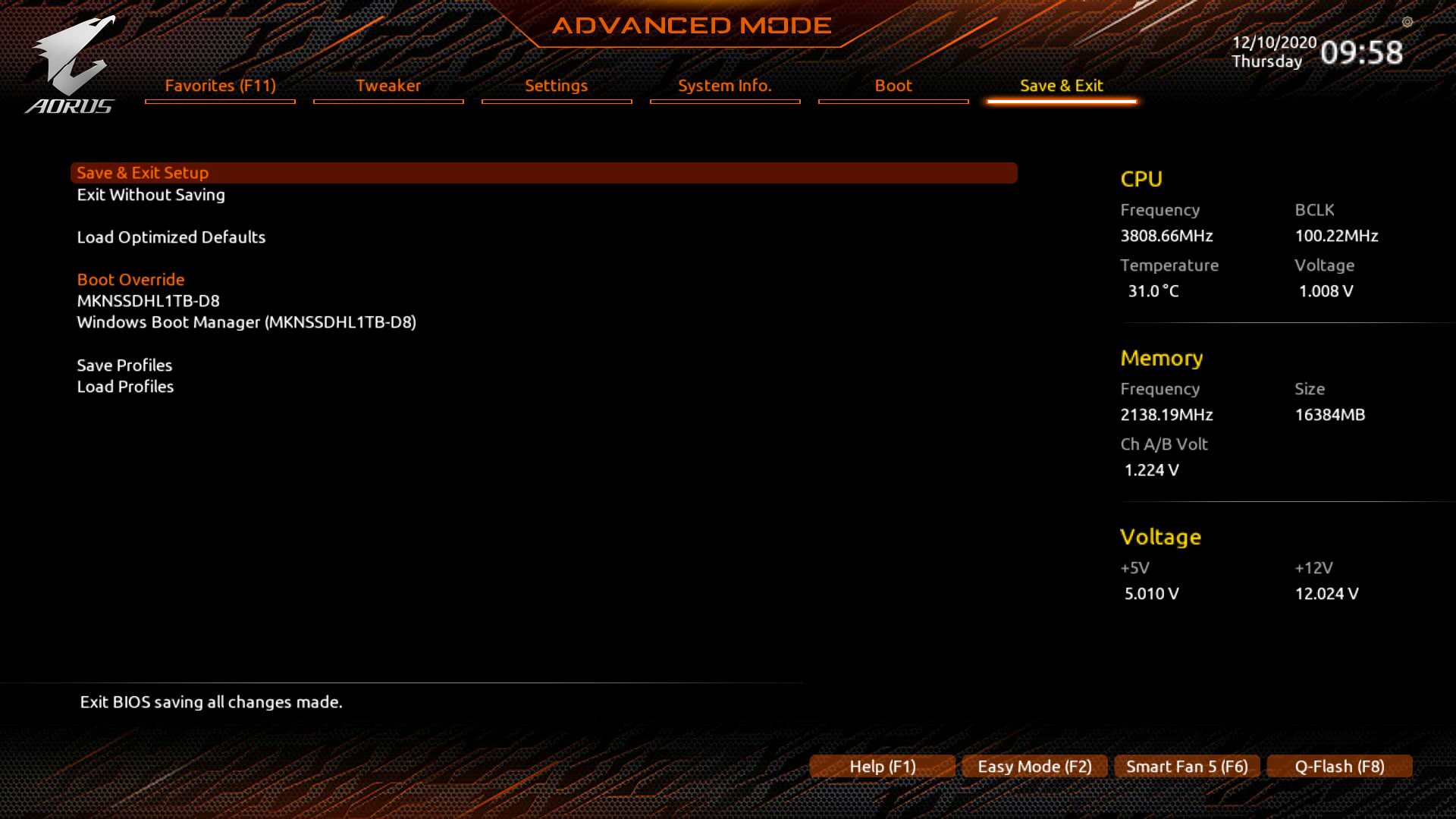
Test System / Comparison Products
As of late November 2020, we’ve updated our test system to Windows 10 64-bit OS (20H2) with all threat mitigations applied. We also upgraded our video card driver to 457.30 and reran all the game tests moving to the new 5000 series CPU. We use the latest non-beta motherboard BIOS available to the public unless otherwise noted. The hardware used is as follows:
| CPU | AMD Ryzen R9 5950X |
| Memory | GSkill Trident Z Neo 2x8GB DDR4 3600 (F4-3600C16Q-32GTZN) |
| GPU | Asus ROG Strix RTX 2070 |
| CPU Cooler | Corsair H150i |
| PSU | Corsair AX1200i |
| Software | Windows 10 64-bit 20H2 |
| Graphics Driver | NVIDIA Driver 457.30 |
| Sound | Integrated HD audio |
| Network | Integrated Networking (GbE or 2.5 GbE) |
Benchmark Settings
| Synthetic Benchmarks and Settings | Row 0 - Cell 1 |
| PCMark 10 | Version 2.1.2177 64 |
| Row 2 - Cell 0 | Essentials, Productivity, Digital Content Creation, MS Office |
| 3DMark | Version 2.11.6866 64 |
| Row 4 - Cell 0 | Firestrike Extreme and Time Spy Default Presets |
| Cinebench R20 | Version RBBENCHMARK271150 |
| Row 6 - Cell 0 | Open GL Benchmark - Single and Multi-threaded |
| Application Tests and Settings | Row 7 - Cell 1 |
| LAME MP3 | Version SSE2_2019 |
| Row 9 - Cell 0 | Mixed 271MB WAV to mp3: Command: -b 160 --nores (160Kb/s) |
| HandBrake CLI | Version: 1.2.2 |
| Row 11 - Cell 0 | Sintel Open Movie Project: 4.19GB 4K mkv to x264 (light AVX) and x265 (heavy AVX) |
| Corona 1.4 | Version 1.4 |
| Row 13 - Cell 0 | Custom benchmark |
| 7-Zip | Version 19.00 |
| Row 15 - Cell 0 | Integrated benchmark |
| Game Tests and Settings | Row 16 - Cell 1 |
| The Division 2 | Ultra Preset - 1920 x 1080 |
| Forza Horizon 4 | Ultra Preset - 1920 x 1080 |
MORE: Best Motherboards
MORE: How To Choose A Motherboard
MORE: All Motherboard Content
Get Tom's Hardware's best news and in-depth reviews, straight to your inbox.
Current page: Firmware and Software
Prev Page Features and Specifications Next Page Benchmarks and Final Analysis
Joe Shields is a staff writer at Tom’s Hardware. He reviews motherboards and PC components.
-
kyuuketsuki Not sure why the author beats on the "no integrated wi-fi" drum. Desktop systems are largely stationary, and many certainly use ethernet for the network connection rather than wi-fi, as they should. Having the option to purchase a board without a wi-fi chipset, which would be a useless component (and therefore expense), is appreciated. For those do want wi-fi, they can use an add-in card (as noted) or find one of the multitude of boards that does have wi-fi.Reply
Also, having a smaller number of SATA and M.2 slots is par for the course for mATX and mITX boards, isn't it? Not sure that's really a legitimate knock against the board either.
Should also note that there is an updated version of this board, denoted with a -P, that upgrades the ethernet to 2.5Gb and ups the supported RAM speed to DDR4-4400. The audio solution may or may not be different (different model numbers are shown in the Newegg listings). Otherwise it seems identical. -
JamesSneed Replykyuuketsuki said:Not sure why the author beats on the "no integrated wi-fi" drum. Desktop systems are largely stationary, and many certainly use ethernet for the network connection rather than wi-fi, as they should. Having the option to purchase a board without a wi-fi chipset, which would be a useless component (and therefore expense), is appreciated. For those do want wi-fi, they can use an add-in card (as noted) or find one of the multitude of boards that does have wi-fi.
Also, having a smaller number of SATA and M.2 slots is par for the course for mATX and mITX boards, isn't it? Not sure that's really a legitimate knock against the board either.
Should also note that there is an updated version of this board, denoted with a -P, that upgrades the ethernet to 2.5Gb and ups the supported RAM speed to DDR4-4400. The audio solution may or may not be different (different model numbers are shown in the Newegg listings). Otherwise it seems identical.
This was a very lazy review. All of the cons really are not cons for 99% of the people building a mATX build. -
kaalus Why would you want more than 4 SATA ports? 4 is too many already, 2 would be perfectly fine. SATA is legacy anyway, and most people should have their harddrives in a server, not in their desktop. No WiFI? That's a plus. And who needs so many USB ports?Reply
The real minus is lack of 2.5GBps Ethernet - that's rules it out for me. -
agabriel Reply
There's a new one with 2.5GBs B550M AORUS PRO-Pkaalus said:Why would you want more than 4 SATA ports? 4 is too many already, 2 would be perfectly fine. SATA is legacy anyway, and most people should have their harddrives in a server, not in their desktop. No WiFI? That's a plus. And who needs so many USB ports?
The real minus is lack of 2.5GBps Ethernet - that's rules it out for me. -
Rookie_MIB Replykaalus said:Why would you want more than 4 SATA ports? 4 is too many already, 2 would be perfectly fine. SATA is legacy anyway, and most people should have their harddrives in a server, not in their desktop. No WiFI? That's a plus. And who needs so many USB ports?
The real minus is lack of 2.5GBps Ethernet - that's rules it out for me.
Well, with the amount of cores that these higher end builds may have, setting up a small VM for a server is a piece of cake. Why have the expense of a completely separate machine when you can take the one you have, allocate 2 out of 16 cores to it, some ram, and then just add 3 or 4 large HDDs for your server.
Personally, 4 SATA ports is just about perfect. 1 NVME M.2 port for the boot drive, 1 SATA for large storage for the main machine and 3 SATA for the VM server. Or, just put all 4 SATAs to the VM and map the large storage for the main system to the server. It would almost be as fast as local storage.
And yes, I do agree with the 2.5G ethernet. These days many people are looking for more than your typical 1Gb networking. Still, the board looks pretty solid otherwise. -
Late_Apex ReplyAdmin said:The MicroATX B550M Aorus Pro performed well in our tests and even managed to overclock the Ryzen 9 5950X. The $129.99 board is a step up from the DS3H, including more robust power delivery, improved audio, a heatsink for an M.2 module, and more.
Gigabyte B550M Aorus Pro Review: Reasonably Priced, Capable MicroATX : Read more
why no comments about the b550 usb bug that is particularly bad with gigabyte b550 boards? Having your USB port drop out randomly is somewhat of a major con. Did gigabyte manage to fix that for this board? Last I looked yesterday they were still waiting for a fix from amd (for a similar board). -
neojack Replykyuuketsuki said:Not sure why the author beats on the "no integrated wi-fi" drum. Desktop systems are largely stationary, and many certainly use ethernet for the network connection rather than wi-fi, as they should.
You are right, but integrated wifi comes with integrated bluetooth, Wich is needed for VR.
Since VR already uses a lot of USB ports, and this motherboard has limited PCIe extentions, that make sense to mention it, but not the way it was in the article.